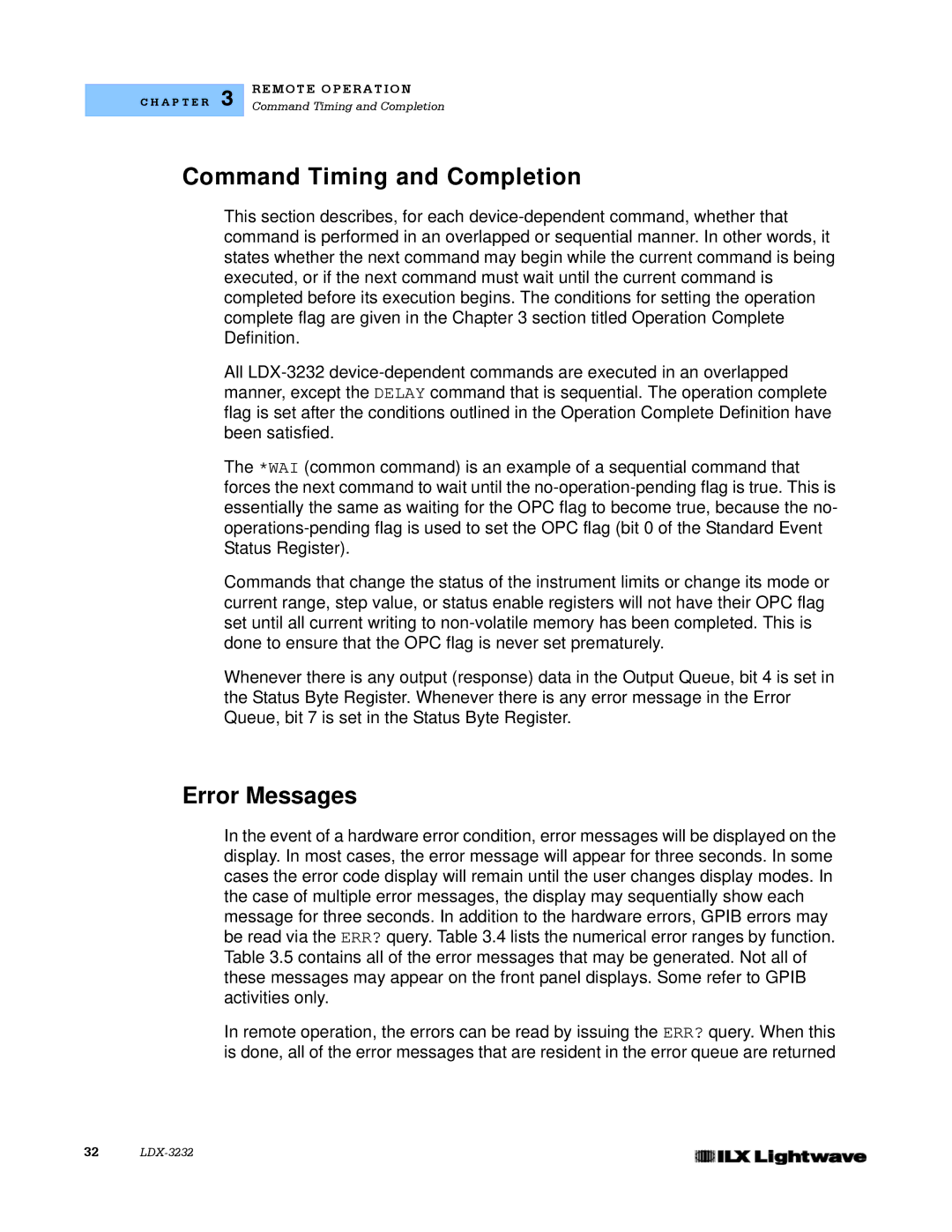
C H A P T E R 3
REMOTE OPERATI ON
Command Timing and Completion
Command Timing and Completion
This section describes, for each
All
The *WAI (common command) is an example of a sequential command that forces the next command to wait until the
Commands that change the status of the instrument limits or change its mode or current range, step value, or status enable registers will not have their OPC flag set until all current writing to
Whenever there is any output (response) data in the Output Queue, bit 4 is set in the Status Byte Register. Whenever there is any error message in the Error Queue, bit 7 is set in the Status Byte Register.
Error Messages
In the event of a hardware error condition, error messages will be displayed on the display. In most cases, the error message will appear for three seconds. In some cases the error code display will remain until the user changes display modes. In the case of multiple error messages, the display may sequentially show each message for three seconds. In addition to the hardware errors, GPIB errors may be read via the ERR? query. Table 3.4 lists the numerical error ranges by function. Table 3.5 contains all of the error messages that may be generated. Not all of these messages may appear on the front panel displays. Some refer to GPIB activities only.
In remote operation, the errors can be read by issuing the ERR? query. When this is done, all of the error messages that are resident in the error queue are returned
32
